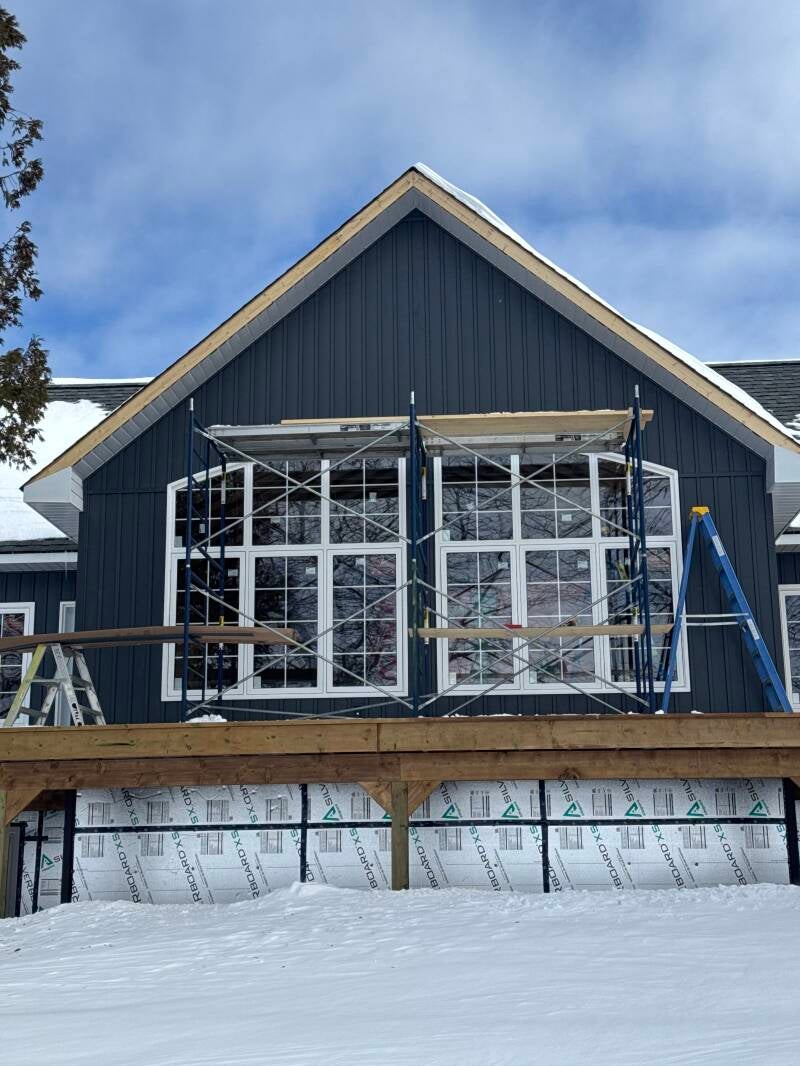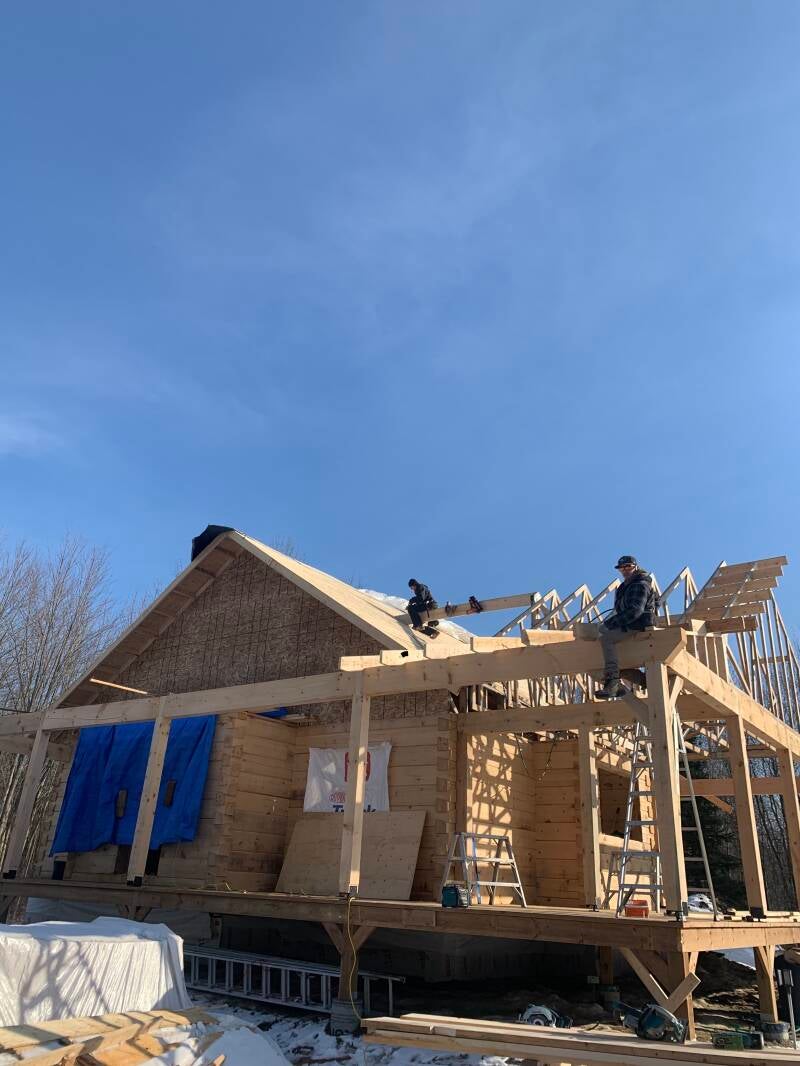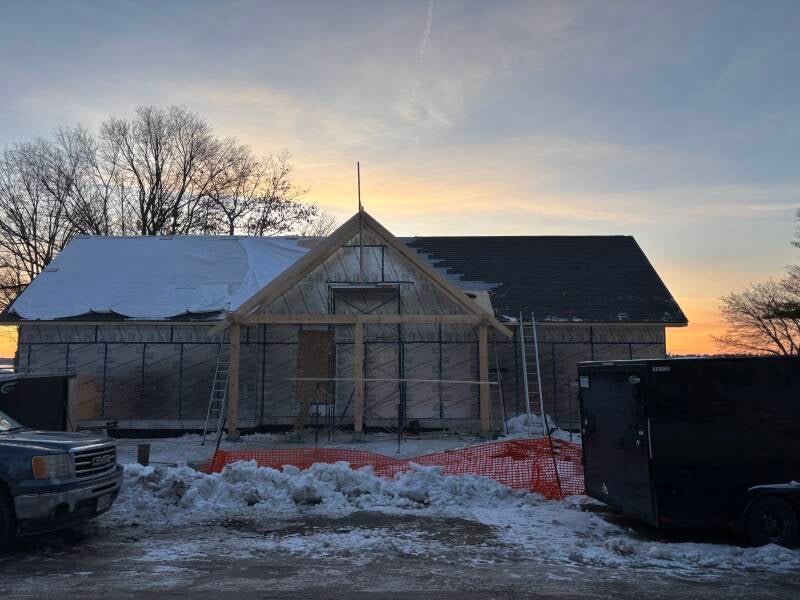Read our latest news
In this space, we share inspiration, tips, and stories that help you get the most out of our services. Whether you're looking for helpful tips, background information, or a behind-the-scenes look: you'll find it all here. We regularly post new articles, so keep an eye on the blog for updates and new insights.



🧠 Behind the Build: How SCC Prepares Sites for Harsh Ontario Winters
Building in the Kawartha Lakes region is not for the faint of heart. When winter settles in, the wind comes roaring across the lakes, the frost bites deep into the ground, and any sloppy preparation is quickly exposed. At SCC Builds, we have spent years working through these conditions, and we have learned a simple truth. The way you prepare a site in the fall determines whether your project survives the winter with grace or turns into a springtime disaster.
Here is a look behind the scenes at how our team sets up every build to handle what an Ontario winter brings.
1. Getting the Groundwork Right Before the Frost
The first rule is simple. Once the frost sets in, digging season is over. If you miss that window, you are looking at costly frost removal, unpredictable heaving, or months of waiting until the ground thaws. That is why we complete all excavation, footing preparation, and subgrade work well before the first hard frost arrives.
For footings, we make sure they are poured while the ground is still workable. We use insulated blankets and sometimes temporary hoarding to keep the concrete warm as it cures. Drainage is another critical piece. Every site receives proper grading and drainage before the snow falls so that spring meltwater does not pool around foundations. Standing water around a foundation during the thaw is an invitation for shifting, cracking, and headaches.
We also prepare access roads in advance. Grading and gravelling driveways ensures that trucks and trades can reach the site once the snow starts to pile up. Good access in February begins with smart preparation in October.
2. Frost Protection is Non-Negotiable
Frost heave can lift a structure like a hydraulic jack if the ground beneath it is not protected. We take frost protection seriously because small oversights now can become expensive structural problems later.
In some cases we use temporary heat in critical zones to keep frost out of freshly poured areas. Salamander or electric heaters are carefully positioned to maintain stable ground temperatures during cold snaps. We also rely on insulated blankets and protective hoarding to shield vulnerable areas from freeze and thaw cycles. Spending a little more on frost protection during the build is far cheaper than repairing damage months later.
3. Getting Weather Tight Quickly
One of the smartest ways to stay productive through winter is to get the structure sealed up as soon as possible. Our goal is always to have the building framed, roofed, wrapped, and closed in before December. Once the envelope is sealed, interior work can continue even when the temperature drops.
This approach keeps crews busy, keeps schedules on track, and avoids the stop-start rhythm that kills momentum. While the snow falls outside, plumbing, electrical, insulation, and finishing work can carry on inside without interruption.
4. Winter Site Logistics
A winter construction site can turn into an ice rink overnight. We prepare for this reality in advance rather than reacting to it once the snow arrives. Plow plans are arranged for driveways and access routes. Sand and salt are stored on site for icy mornings. Temporary lighting is installed to counter the short daylight hours. Lumber and materials are stored under cover so they remain workable instead of freezing into solid blocks.
These preparations are part of our build strategy, not afterthoughts. A well-organized site is safer, more productive, and more resilient through the cold months.
5. Planning Ahead
Winter work lives or dies on planning. We order materials well in advance, confirm the availability of trades, and build realistic buffers into our timelines. Everyone enjoys a sunny framing day in June. January brings entirely different challenges. Careful planning is what allows us to keep the machine running smoothly through the toughest months of the year.
Why This Matters to Clients
Homeowners often ask whether it is possible to build through the winter in Ontario. The answer is yes, but only if the project is planned and prepared properly. A well-prepared site means no frost-heaved footings or flooded foundations in the spring. It allows interior work to continue throughout the winter, which shortens overall timelines. It creates a safer working environment for crews and trades. Most importantly, it leads to higher quality outcomes and fewer delays.
SCC Builds is Built for Real Ontario Winters
Ontario winters are harsh, but SCC Builds is built for exactly these conditions. We have delivered projects through deep freezes, heavy snowfalls, and muddy thaws. When you work with us, you are hiring a team that knows how to keep a project moving regardless of what the weather throws our way.
If you are thinking about starting a build, fall is the time to get moving. Proper preparation now means your project will stand strong all winter and hit the ground running in the spring.
Contact us today to talk timelines or book a site preparation consultation.


Add comment
Comments